Brooklyn 2.0: The New Bunker Studios Offers Next-Level Recording Experience
WILLIAMSBURG, BROOKLYN: There’s a trend afoot in Brooklyn, and it’s one of upward mobility. Where the borough was once a haven for DIYers, analog workshops and quirky private studios, some of the major players on the scene are raising the bar for their studio businesses and, consequently, for local music.
When the dust settles, a cluster of next-level recording studios will have opened in Williamsburg, including the new version of The Bunker – just launched this past weekend.
Located in a 3,000-sq. ft. industrial space in South Williamsburg, The Bunker’s new-and-improved recording studios mark a new era in NYC music in which indie artists have access to affordable multi-room tracking.
Studio A at the new Bunker features an impressive “classic studio”-style main tracking space with 25’ vaulted ceiling, two smaller isolated recording rooms and an iso booth. Wide glass windows and doors provide great sightlines throughout the space, and moveable walls make for a uniquely modular floorplan.
For even just this one aspect of The Bunker, the room is a huge addition to the recording studio spread in New York City, and most definitely in Brooklyn where facilities for large ensemble acoustic and live rock recording are few and far between. In an even more meaningful sense, however, the new Bunker opens the door to a next-level recording experience for much of its clientele.
“There are a lot of people playing really great acoustic music who can’t afford to make an acoustic record,” says The Bunker co-owner and producer/engineer John Davis. “There are just no spaces to properly record that kind of music that they can afford.”
For the most part, the rooms that are outfitted with multiple acoustic recording spaces would have been built many years ago, when that’s what making an album required. The Bunker is bringing that classic layout to a new business of mostly self-funded projects.
“Being able to build this place from scratch meant that we could offer something like the great studios built in the 70s and 80s,” says Aaron Nevezie, producer/engineer and co-owner of The Bunker, “A big, acoustically-designed room purpose-built for live tracking. And we’d also be able to offer that with a more contemporary business model so that we can still be indie-friendly.”
In the time elapsed since a ground-up room like this was built, a huge portion of the acoustic, neo-classical and jazz community has settled in Brooklyn – not to mention the well-documented population of indie rockers who also appreciate a great tracking room. The Bunker provides a convenient, neighborhood option to this new generation of artists.
“There are so many great musicians who live in the neighborhood,” says Davis. “When our friends need to do string sessions, they have to call their musicians who all live in Williamsburg to get on the train and go to Midtown, just to cut a string quartet for three times the cost it will be here.”
Cost, again, is a big factor for Davis and Nevezie, both of whom play in bands, and understand the independent artist’s business. That in mind, they carved out two studios in the new location – the main Studio A tracking rooms with large control room, priced at $750-a-day, and a nice-sized Studio B with its own tracking room, bookable for $450-a-day.
“The price-point was really important for us because we know people cannot afford much more than that,” says Davis. “It’s fun to do big records. It’s fun when there’s a budget. But most of the time, there isn’t. So we can split time between Studio A and Studio B accordingly…do a couple days in A and then a week in B, for example.”
Meanwhile clients that have been booking a day or two at one of the higher-priced rooms in Manhattan might opt to book a longer session at The Bunker. Either way, Davis and Nevezie see a demand.
“I think there’s a renaissance going on of people wanting to track live, and track to tape,” Nevezie asserts. “Bands that want to make it ‘real.’ So we can accommodate that. But also John and I both come from a jazz background as players. We got to do some cool jazz records in our previous space, but the new studio is the sort of place we can invite anybody we know of, at every level, and they’ll be super psyched to play in here.”
A Classic Room That Functions Like A Modern Room
While the Bunker’s build-out and migration has been about a year in the making, the decision to move and expand operations was apparently quite spontaneous, inspired by another exciting studio expansion across town at Studio G.
“We’d been wanting to move out of our previous space for awhile – we were just outgrowing it,” says Davis. “And talking to Joel [Hamilton] about what he was doing put the idea in our head to look around for our own new space.”
They found the new location faster than they could have imagined.
“We walked in here and couldn’t believe our eyes,” Nevezie recalls. “You just do not find this kind of space in New York… at least not two blocks from Grand Street in Williamsburg. We knew we had to jump on it. And then, we needed to find someone to help us build it.”
They consulted with Norwich, CT-based studio designer Rod Gervais on the acoustic designs, and hired a good lead carpenter for the framing, but ultimately did about 80% of the building themselves.
“We wanted it done right – high-end and pro – but we didn’t want to lose that community DIY-ness of it,” says Davis. “We wanted this to be ours, built by us.”
They based the design on rooms they’ve both loved working in, referencing Avatar Studios A and C, which also feature multiple acoustic spaces for a range of sounds.
“Another thing we were really set on was having a look that wasn’t too modern,” notes Davis. “You want it to feel like a classic room but function like a modern room.”
In Gervais, the guys found someone with a strong vision of how to best utilize the space.
“There are certain things that a studio designer, who is both an architect from a structural perspective and studio designer from an acoustics perspective, thinks about differently than we do as producers and engineers,” says Davis, “For example, originally we had envisioned the live room being even bigger and making the isolated rooms off the main room smaller, more like booths.
“As a result of Rod’s design, instead of having one live room with three booths, we have a live room with high ceilings, a live room that’s somewhat dead with medium ceilings, and another live room that’s bright with vaulted ceilings, and we have an iso booth. His thought was let’s get three unique sounding spaces and one booth so that you can really tailor the sounds. That way you’ll also have rooms that will work better for certain things, i.e. the drier 70s-like drum room, the brighter room that’s good for piano or strings, etc.”
In October, the guys moved all their gear over from the previous space, and worked long days getting the rooms into working order. Initial tracking sessions in the new room began in November and sessions have been running ever since, so far most notably with the funk band Lettuce, and jazz-pop singer Sonya Kitchell.
The response to the new studios has been positive. And perhaps most importantly, the co-owners find the rooms elevating the sound of the recordings, and the potential sound, from an engineering/mixing perspective.
“The drum sound is super fat and super punchy but we’re also getting a clarity we were always searching for in our old space,” notes Nevezie. “And now it’s just about putting out the right mics and having great musicians play, because it’s just there in the room.”
“We’ve also noticed that the material we’ve tracked here has given us so much more flexibility in terms of what we want to have going on in the mix. If we want to just have a mono overhead and a kick drum and that’s the drum sound, it really works. Or you can have the stereo mics or the stereo overheads, or close mics only…you just bring up the fader, and that’s the sound.”
That sound is something unique to this new space – a quality Nevezie and Davis aspired to in continuing that classic studio legacy. The great rooms always grew to be associated with particular sounds based on records where the acoustic space played a role.
“I just did this jazz session and it was one of those sessions where we really opened up the room,” Nevezie shares. “We had a bass player slightly gobo’d off, piano and guitar and double saxophones, and it was just incredible to hear the beauty of the bleed into the other mics. Being able to use that as the sound of the group, where you just bring up the faders and everybody sounds like they’re in a space together…it was wonderful.”
Facts, Figures, Features
The Bunker’s main tracking room corresponds with a control room that’s quite sizable as well. The board is a 26-channel Auditronics console, and with outboard gear stacked across in-wall racks, and Studer A80 and A810 tape machines in the back corner, the room provides ample space for people to sit, listen, and participate in the session.
Meanwhile Studio B is a great room of its own. With 250 or so sq. ft of tracking room featuring custom-built diffusion panels, and space enough in the control room for group writing/production sessions, this is also a notable new addition to the Brooklyn scene. When packaged with Studio A, the pair of rooms functions as an affordable facility to make a record start to finish.
From a business perspective, Davis adds: “This is important – to not be pricing yourself out of a market you’ve been in for a long time.”
Both studios feature Pro Tools HD and a colorful collection of vintage and modern audio and musical gear. [Click for a full list of gear.]
Some of the classic rooms in Manhattan may be exceedingly equipped but may also feel sterile for lack of the personal touch of a private studio. That you’ll find here in the racks of uniquely sourced outboard gear and the rooms filled with instruments – organs, synths, pianos, amps, guitars and more.
The Bunker’s 1969 Steinway M grand piano can roll anywhere in Studio A, and each studio also has its own upright piano. And there’s plenty of space and mic cabinet to explore different setups and miking techniques. Additionally, the Bunker will have natural reverb options via two echo chambers fashioned out of an old boiler room and a long fire-escape/hallway that runs behind the studio wall.
The uniqueness and utility of these new acoustic spaces may be The Bunker’s greatest offering.
“People are so used to recording in non-designed, flawed spaces and making it work,” says Nevezie. “We did, and most of our friends did for years. But when you can actually hear instruments in a properly built space, it just makes everything so much easier. It’s just that aside from the people who get to record at the big commercial studios, most people haven’t been able to experience that.
“So hopefully, with our location and rates, a lot more people will be able to walk into a great room, sit down at a Steinway and play it, and feel like a million bucks.”
For more details and to get in touch, visit http://www.thebunkerstudio.com.
Please note: When you buy products through links on this page, we may earn an affiliate commission.







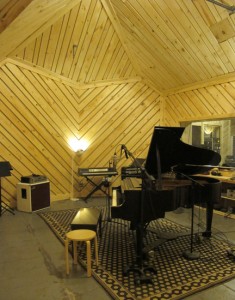
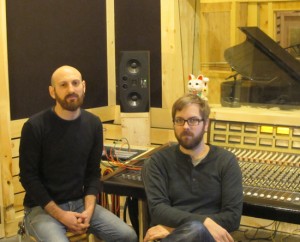

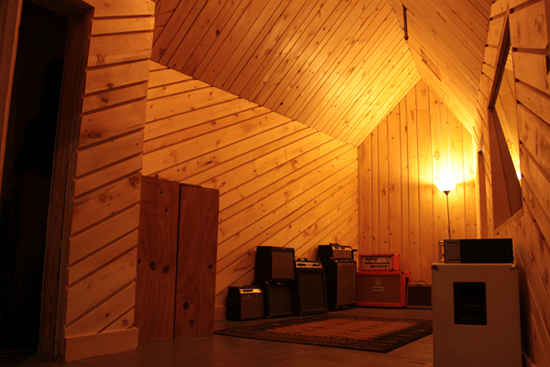

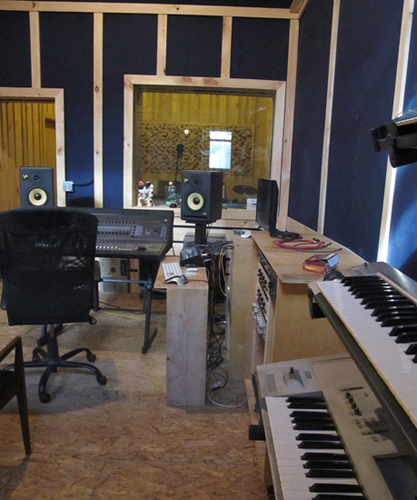
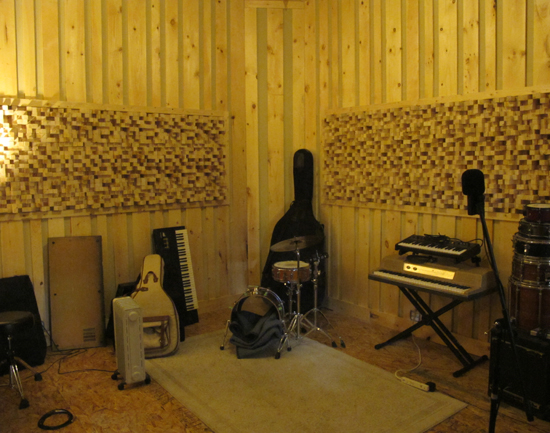
Session Drummer Goran
January 25, 2012 at 10:56 pm (12 years ago)Congratulations on your new studio!
Warren Maxwell
January 26, 2012 at 9:03 pm (12 years ago)Hey Aaron bro. Wazza here from TrinityRoots NZ. Far out man! Congrats on a beautiful looking studio! I am salivating. Tama Waipara posted this article. Good to see someone doing really well. Catch up somewhere out there in the jungle! Kia ora bro!Waz
Warren Maxwell
January 26, 2012 at 9:03 pm (12 years ago)Hey Aaron bro. Wazza here from TrinityRoots NZ. Far out man! Congrats on a beautiful looking studio! I am salivating. Tama Waipara posted this article. Good to see someone doing really well. Catch up somewhere out there in the jungle! Kia ora bro!Waz
Rod Gervais
January 27, 2012 at 4:05 pm (12 years ago)Congratulations guys……… yu did a fantastic job with this – and deserve the recognition.
Alon N
April 26, 2012 at 6:18 pm (12 years ago)Fantastic recording experience, I had a blast working with you guys – can’t wait to find a chance to come back !